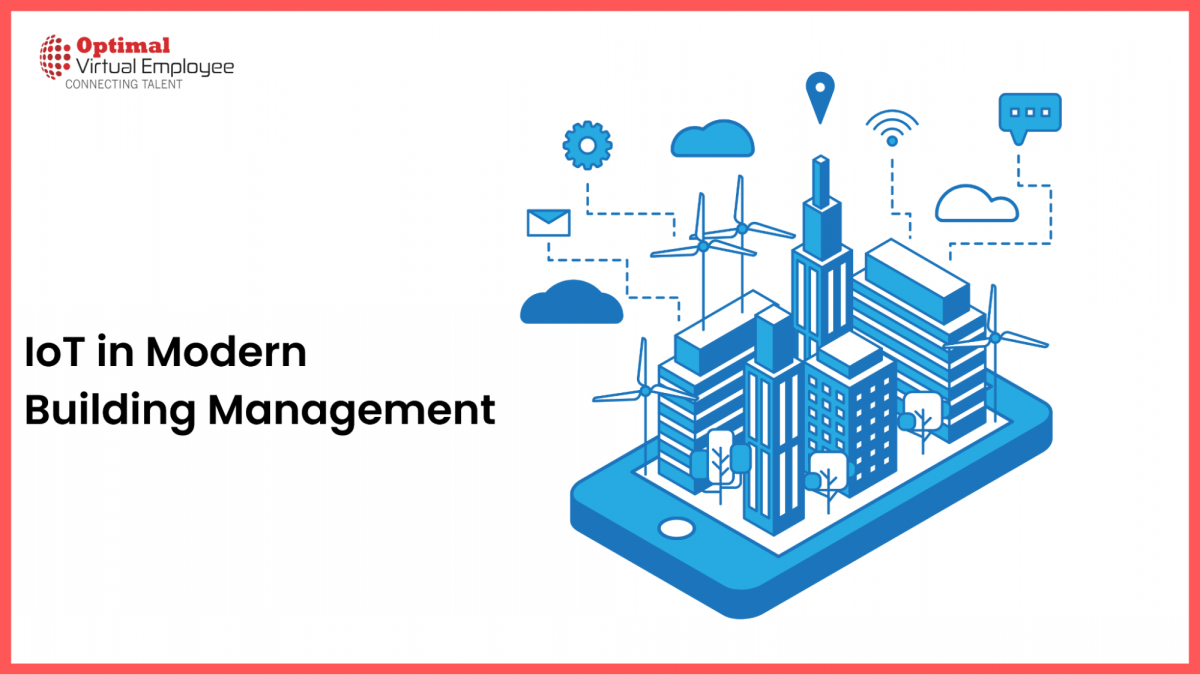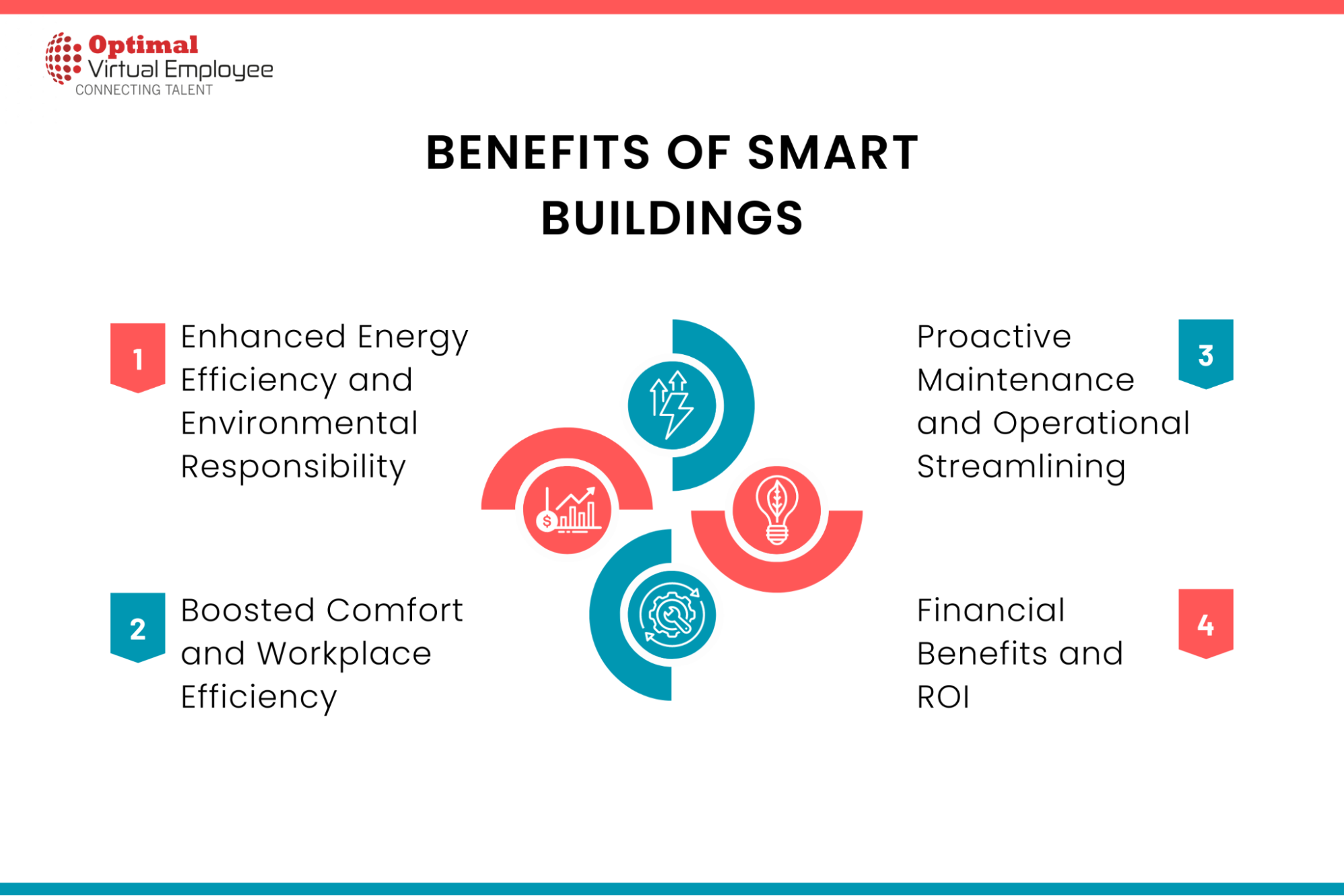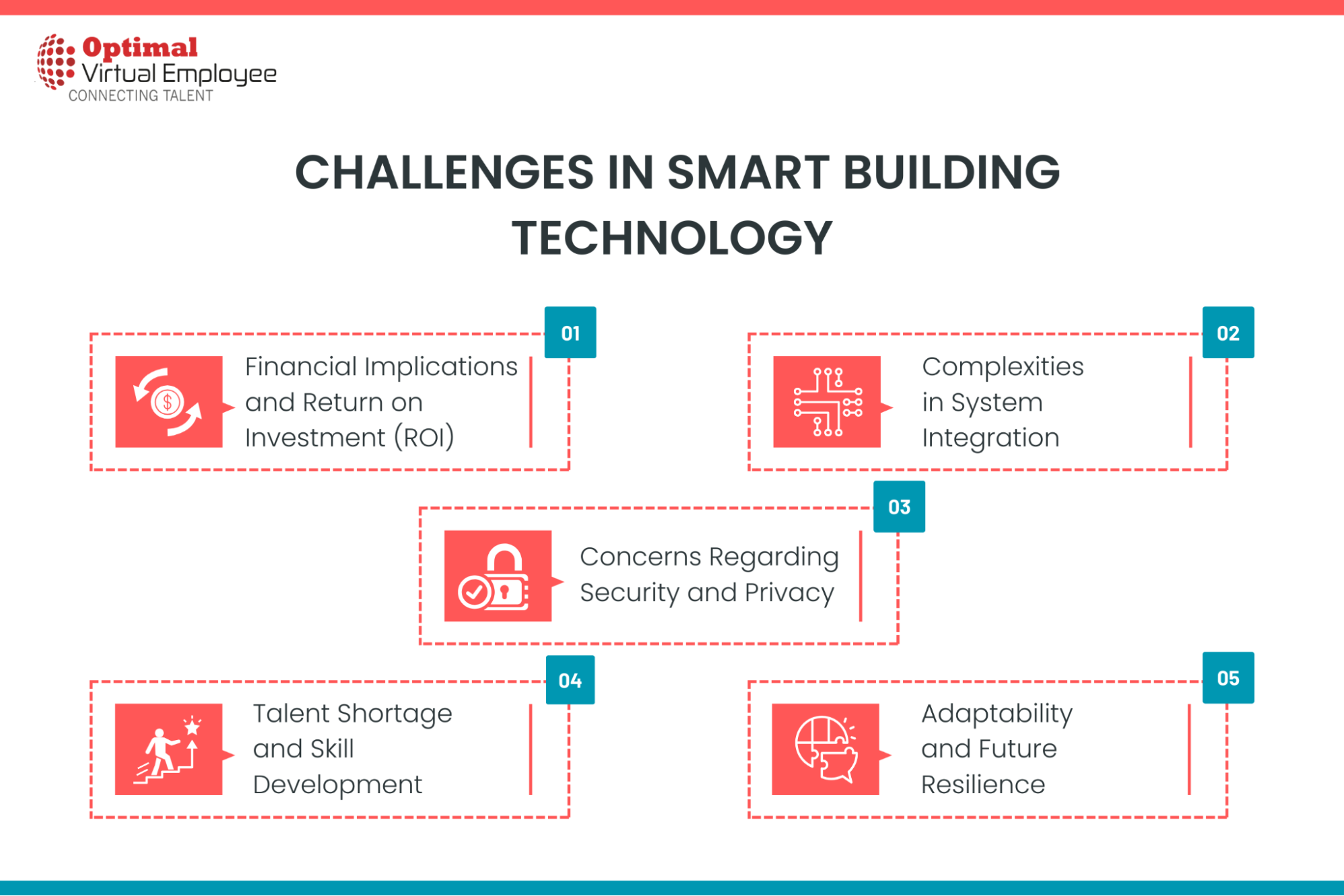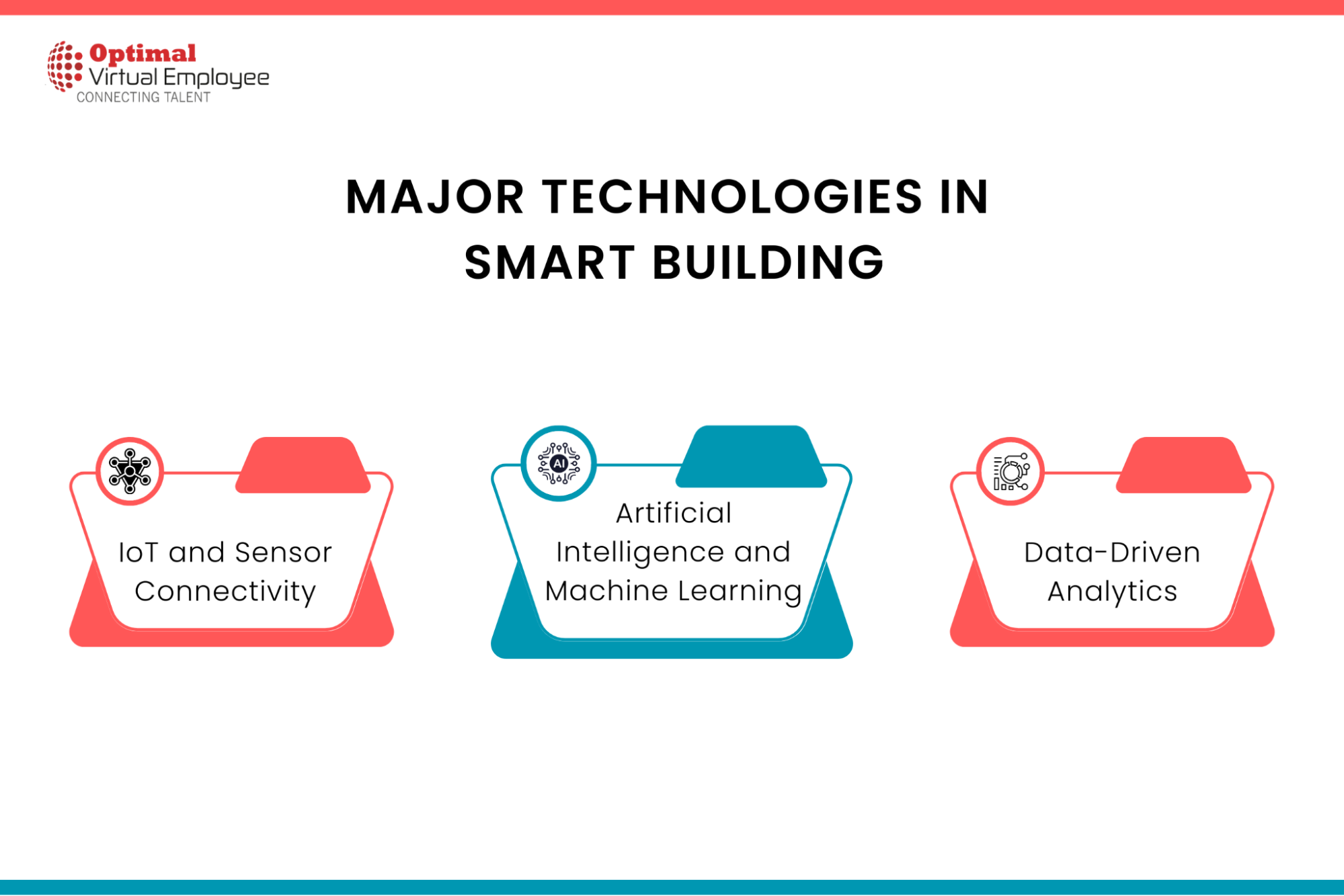Can you envision a reality where buildings are capable of intelligent decision-making, adjusting themselves to make your life easier and more efficient?
Sounds like something straight out of a sci-fi movie, doesn’t it?
Well, this vision is rapidly becoming a reality through the advent of Smart Buildings. These innovative structures are not just altering the way we live, but also dramatically reshaping the world of business.
In this article, we’ll explore the transformative power of smart buildings and their impact on business operations. Keep reading.
Smart Buildings & Key Benefits
Smart buildings represent the pinnacle of contemporary ingenuity, merging cutting-edge technology with classic architectural designs to forge environments that are not just practical but also extraordinarily efficient and eco-friendly.
Inextricably linked with the Internet of Things (IoT), these savvy structures provide a multitude of advantages to IoT app development companies, revolutionizing the way they function and succeed.
Let’s delve deeper into the primary benefits of smart buildings:
Enhanced Energy Efficiency and Environmental Responsibility
Smart buildings employ sophisticated systems and sensors to continually assess and fine-tune energy usage, thereby minimizing waste and reducing their carbon footprint. This approach supports a more sustainable future through energy-smart practices.
Boosted Comfort and Workplace Efficiency
These advanced structures cultivate environments conducive to well-being and high productivity by intuitively adjusting to occupant needs. Features such as automated lighting, climate control, and air quality monitoring are standard.
Proactive Maintenance and Operational Streamlining
With cutting-edge monitoring systems in place, smart buildings can identify potential problems before they escalate. This foresight not only prolongs the life of the building’s infrastructure but also enhances operational efficiency.
Financial Benefits and ROI
While the upfront costs for smart building technology may be higher, the long-term gains include substantial financial savings. These come from:
– Lowered energy expenditures
– Streamlined maintenance procedures
– Boosts in productivity
Challenges In Implementing Smart Building Technology
As more businesses embrace the use of smart building technology, they encounter various hurdles in the integration of these sophisticated systems.
Below, we outline five crucial challenges that businesses need to navigate while integrating smart building technology:
Financial Implications and Return on Investment (ROI)
A major hurdle for businesses is the initial financial outlay associated with adopting smart building technology, covering:
– Expenses for sensor installation
– Costs for infrastructure upgrades
– Charges for system integration
Although smart buildings offer long-term advantages like better energy efficiency, reduced maintenance expenses, and increased productivity, companies need to develop a meticulously planned strategy to capture these benefits in an ever-changing technological landscape.
Complexities in System Integration
Creating a smart building necessitates the amalgamation of multiple systems—ranging from HVAC and lighting to security and energy management. The challenge lies in coordinating these disparate systems, which may operate on different protocols and standards.
Companies must ensure that all elements communicate cohesively and function harmoniously. This involves:
– Collaborating with several vendors
– Tailoring unique solutions
– Investing in tools that facilitate system integration
Concerns Regarding Security and Privacy
Companies need to tackle the potential vulnerabilities in security and privacy, as smart buildings amass and analyze a wealth of data. This involves:
– Safeguarding delicate information such as details about occupants and building schematics from unauthorized access and cyber threats.
– Adhering to data protection laws, including regulations like the GDPR (General Data Protection Regulation).
– Instituting strong security protocols and establishing a well-rounded data privacy strategy.
Talent Shortage and Skill Development
The deployment of smart building technology demands specialized competencies, particularly as technology evolves within the business landscape. Companies may need to either upskill their current workforce or recruit new specialists proficient in:
– Building automation systems
– Data Analytics
– Cybersecurity
Fulfilling this talent requirement can be a hurdle, as the demand for such expertise frequently exceeds availability. Forming alliances with educational bodies and industry associations can assist businesses in closing this skills gap.
Adaptability and Future Resilience
Contemporary businesses need to make sure their smart building technologies can adjust to evolving demands and stipulations. This means opting for systems that are not only scalable but also easily modifiable or extendable when necessary.
Moreover, companies should focus on solutions grounded in open standards that can easily mesh with next-generation technologies such as IoT and AI, thereby safeguarding their investments for the future.
By successfully navigating these challenges, businesses can effectively roll out smart building technology and enjoy its myriad advantages.
Overcoming the Challenges: Best Practices & Strategies
Adopting smart buildings and unlocking their revolutionary capabilities is a thrilling opportunity for businesses in an era of constant technological evolution.
Therefore, it’s crucial to adeptly manage the obstacles and intricacies associated with deploying these advanced technologies.
Let’s look at the best practices to ensure a successful transition:
In-Depth Cost-Benefit Evaluation
Performing a detailed cost-benefit analysis enables you to identify the most efficient solutions tailored to your unique needs and budget constraints, thereby securing a valuable investment. Businesses should balance the expenditures against the projected gains.
Collaborate with Tech Partners and Suppliers
Partnering with savvy tech experts and suppliers can be a game-changer for the success of your smart building initiative. These specialists offer:
– Invaluable perspectives
– Expert advice
– Ongoing support
– Strategies to evade common mistakes
– Techniques to Optimize Your ROI
Emphasize Robust Security Protocols
The advent of smart buildings also introduces potential security vulnerabilities. To defend your data and preserve the privacy of occupants, it’s crucial to put stringent security measures at the forefront and collaborate with vendors who are equally committed to data safety.
Invest in Workforce Training and Skill Enhancement
The efficacy of your smart building initiative is reliant on the team responsible for its management and upkeep. Committing resources to staff training and skills advancement ensures that your team is well-prepared to navigate new technologies and systems, facilitating a seamless transition and sustained success.
Focus on Adaptability and Longevity
Given the ever-evolving landscape of technology, it’s imperative to opt for solutions that are both scalable and future-resilient. By choosing adaptable and forward-compatible technologies, you position your organization to embrace future innovations while maintaining a competitive edge.
Technologies Transforming Business Landscapes
A host of innovative technologies have emerged lately, transforming the way businesses operate and oversee their properties.
Utilizing these advancements, an IoT software development firm can engineer smart buildings that are not only efficient and cost-effective but also environmentally responsible, facilitating improved resource management.
5 Key Technologies Shaping the Future of Smart Buildings
IoT and Sensor Connectivity
The Internet of Things (IoT) and sensor networks facilitate communication and data exchange among various devices and systems within a building. They collect and relay real-time information on elements such as:
– Temperature
– Humidity
– Occupant numbers
– Energy usage
This data is subsequently analyzed to make data-driven decisions about building functions, ultimately leading to enhanced efficiency and cost savings.
Systems for Building Automation and Control
Technologies for building automation and control help minimize energy usage and upkeep expenses by fine-tuning system performance and spotting potential problems before they escalate.
– Integrate different aspects like HVAC, lighting, and security into a unified platform.
– Facilitate more streamlined oversight and control of building operations.
– Automate specific tasks like temperature and lighting adjustments.
The Role of Artificial Intelligence and Machine Learning
Increasingly, AI and machine learning are incorporated into smart buildings to sift through the massive data volumes generated by IoT and sensor networks. These sophisticated algorithms can:
– Detect recurring patterns and trends
– Enable businesses to arrive at well-grounded decisions
– For instance, AI-enabled systems can forecast equipment malfunctions, enabling proactive upkeep and lessening operational interruptions.
Data-Driven Analytics
Companies can extract meaningful insights about building performance and pinpoint areas in need of enhancement through data analytics. Additional uses for data analytics include:
– Crafting strategies for predictive maintenance
– Tracking the performance of machinery
– Timing maintenance based on real wear and utilization
These practices contribute to extending the lifespan of equipment while cutting down on maintenance expenses.
Systems for Energy Management
Amidst rising energy costs and growing consciousness about energy conservation, companies are turning to energy management systems to diminish their energy consumption and environmental footprint. These platforms:
– Oversee and regulate energy usage
– Spot inefficiencies
– Fine-tune performance
Furthermore, these systems can be integrated with renewable energy sources like solar panels, thereby reducing dependence on conventional energy sources.
Conclusion
Swift advancements in technology are consistently reshaping the way businesses manage and operate their facilities, ushering in the age of intelligent buildings.
Through the integration of IoT, automated systems, AI, data analytics, and energy management strategies, businesses can enhance productivity, cut costs, and create a more pleasurable and environmentally friendly space for occupants and staff.
Yet, to fully leverage these benefits, companies must address several challenges including cost and ROI considerations, systems integration, security and privacy concerns, skill set gaps, and the need for future scalability.
By surmounting these obstacles and fully adopting smart building technologies, enterprises can position themselves at the cutting edge of this evolving landscape and enjoy a myriad of advantages.
As we venture deeper into the future, the adoption of intelligent buildings will increasingly become the norm, shaping our residential and professional habitats. Therefore, investment in these groundbreaking technologies is not just advisable, it’s essential.












